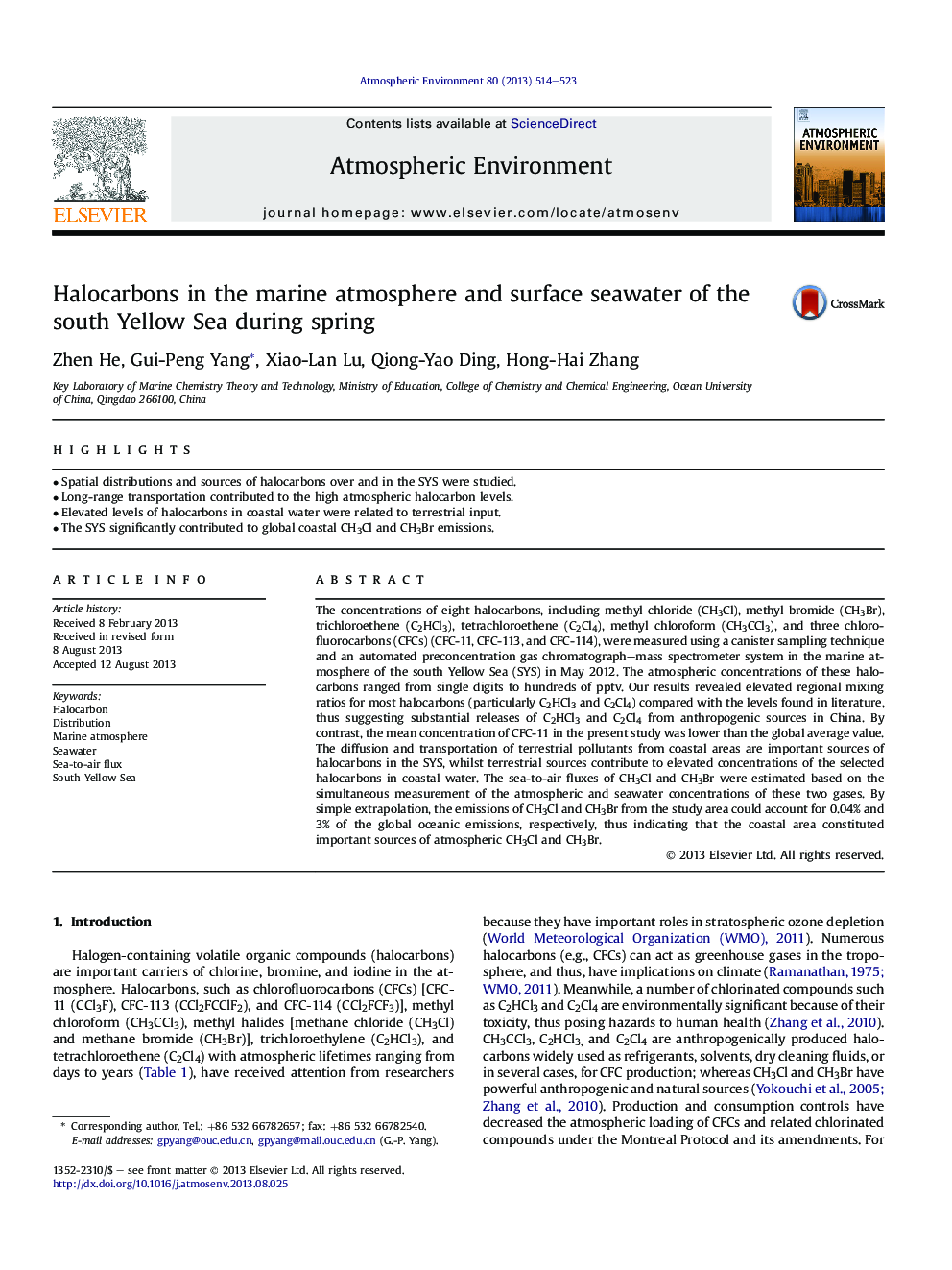| Article ID | Journal | Published Year | Pages | File Type |
|---|---|---|---|---|
| 6340715 | Atmospheric Environment | 2013 | 10 Pages |
Abstract
The concentrations of eight halocarbons, including methyl chloride (CH3Cl), methyl bromide (CH3Br), trichloroethene (C2HCl3), tetrachloroethene (C2Cl4), methyl chloroform (CH3CCl3), and three chlorofluorocarbons (CFCs) (CFC-11, CFC-113, and CFC-114), were measured using a canister sampling technique and an automated preconcentration gas chromatograph-mass spectrometer system in the marine atmosphere of the south Yellow Sea (SYS) in May 2012. The atmospheric concentrations of these halocarbons ranged from single digits to hundreds of pptv. Our results revealed elevated regional mixing ratios for most halocarbons (particularly C2HCl3 and C2Cl4) compared with the levels found in literature, thus suggesting substantial releases of C2HCl3 and C2Cl4 from anthropogenic sources in China. By contrast, the mean concentration of CFC-11 in the present study was lower than the global average value. The diffusion and transportation of terrestrial pollutants from coastal areas are important sources of halocarbons in the SYS, whilst terrestrial sources contribute to elevated concentrations of the selected halocarbons in coastal water. The sea-to-air fluxes of CH3Cl and CH3Br were estimated based on the simultaneous measurement of the atmospheric and seawater concentrations of these two gases. By simple extrapolation, the emissions of CH3Cl and CH3Br from the study area could account for 0.04% and 3% of the global oceanic emissions, respectively, thus indicating that the coastal area constituted important sources of atmospheric CH3Cl and CH3Br.
Related Topics
Physical Sciences and Engineering
Earth and Planetary Sciences
Atmospheric Science
Authors
Zhen He, Gui-Peng Yang, Xiao-Lan Lu, Qiong-Yao Ding, Hong-Hai Zhang,
